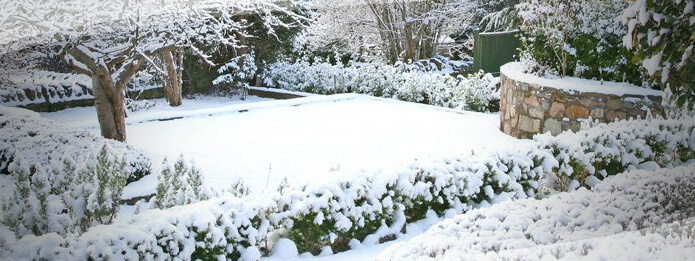 If you’re not a gardener, then you might wonder why garden shows and flower shows only take place in spring and summer. Is that the only time of year when gardeners are busy? And do gardens lie dormant during winter, waiting patiently to bloom in spring? Quite the opposite. In fact, to grow those beautiful gardens and flowers, a lot of work needs to take place during every season.
Even in winter, there’s a lot of work that needs to be done to give your garden the best chance of blossoming in spring. Pest control is a top priority and if you remove those harmful insects in winter, then you’ve done the hard work for next year. Many pests hide from the cold during winter, burrowing deep into the ground. We’re going to share some simple tips on how to get a pest-free garden this winter.
If you’re not a gardener, then you might wonder why garden shows and flower shows only take place in spring and summer. Is that the only time of year when gardeners are busy? And do gardens lie dormant during winter, waiting patiently to bloom in spring? Quite the opposite. In fact, to grow those beautiful gardens and flowers, a lot of work needs to take place during every season.
Even in winter, there’s a lot of work that needs to be done to give your garden the best chance of blossoming in spring. Pest control is a top priority and if you remove those harmful insects in winter, then you’ve done the hard work for next year. Many pests hide from the cold during winter, burrowing deep into the ground. We’re going to share some simple tips on how to get a pest-free garden this winter.
 If you’re not a gardener, then you might wonder why garden shows and flower shows only take place in spring and summer. Is that the only time of year when gardeners are busy? And do gardens lie dormant during winter, waiting patiently to bloom in spring? Quite the opposite. In fact, to grow those beautiful gardens and flowers, a lot of work needs to take place during every season.
Even in winter, there’s a lot of work that needs to be done to give your garden the best chance of blossoming in spring. Pest control is a top priority and if you remove those harmful insects in winter, then you’ve done the hard work for next year. Many pests hide from the cold during winter, burrowing deep into the ground. We’re going to share some simple tips on how to get a pest-free garden this winter.
If you’re not a gardener, then you might wonder why garden shows and flower shows only take place in spring and summer. Is that the only time of year when gardeners are busy? And do gardens lie dormant during winter, waiting patiently to bloom in spring? Quite the opposite. In fact, to grow those beautiful gardens and flowers, a lot of work needs to take place during every season.
Even in winter, there’s a lot of work that needs to be done to give your garden the best chance of blossoming in spring. Pest control is a top priority and if you remove those harmful insects in winter, then you’ve done the hard work for next year. Many pests hide from the cold during winter, burrowing deep into the ground. We’re going to share some simple tips on how to get a pest-free garden this winter.

